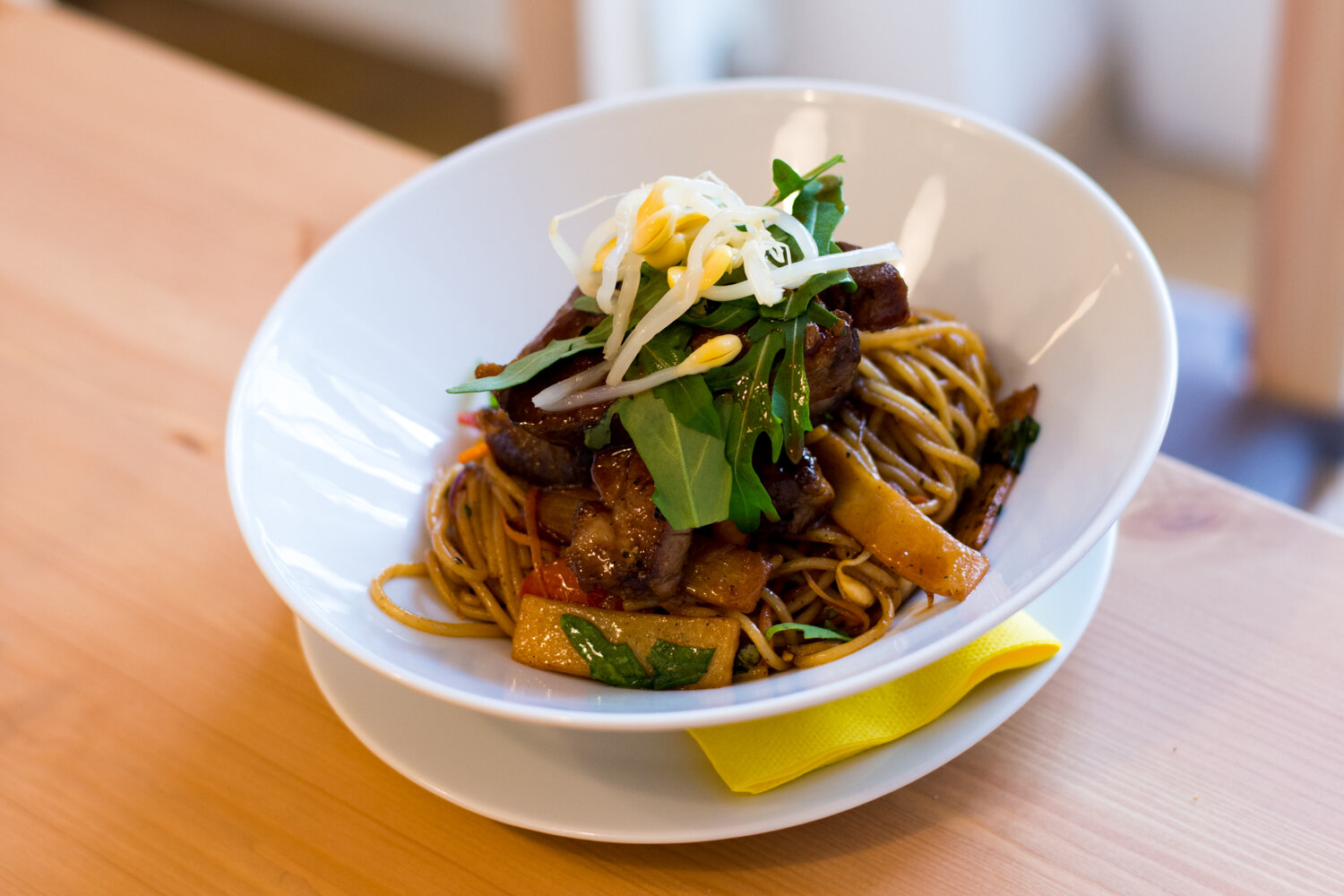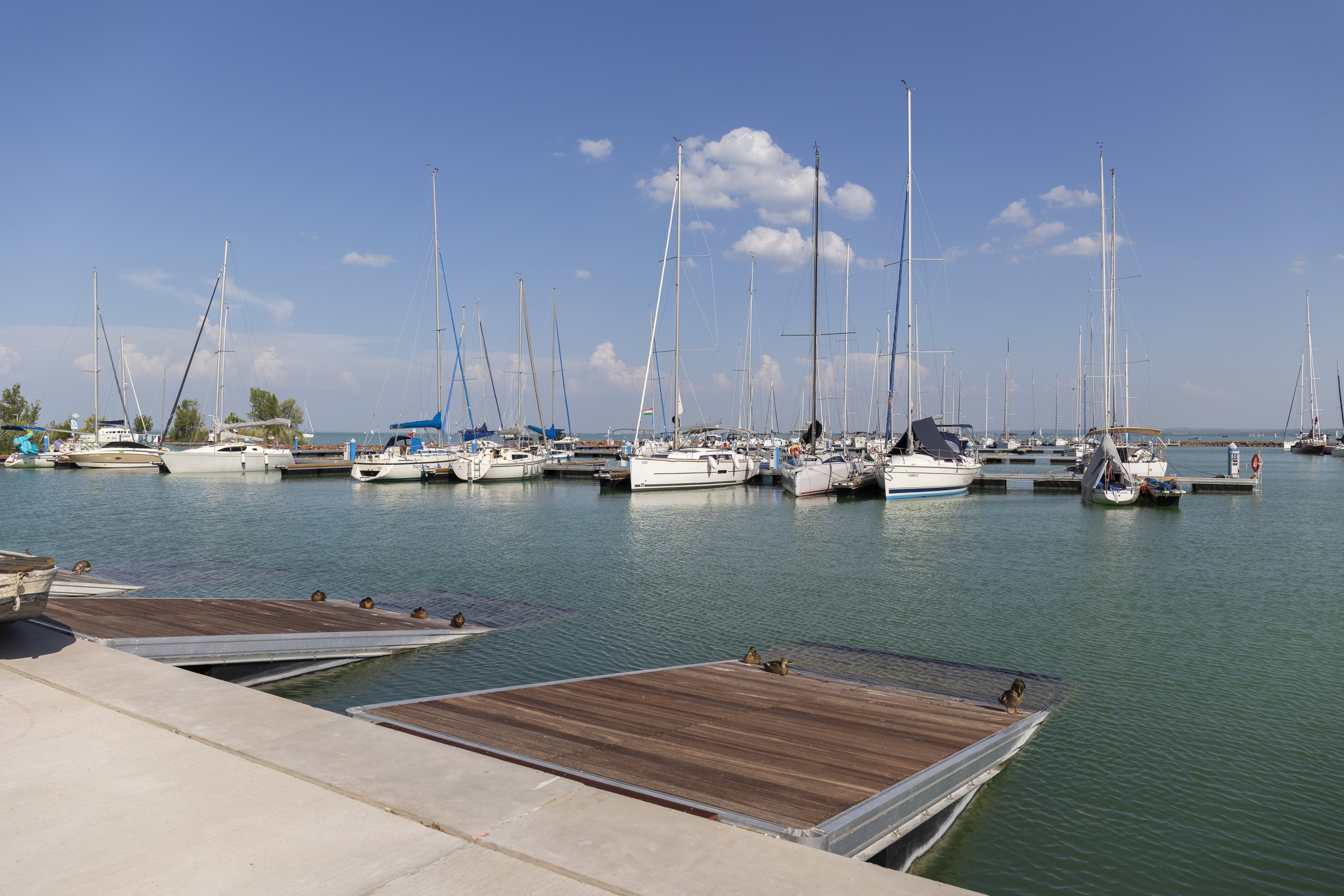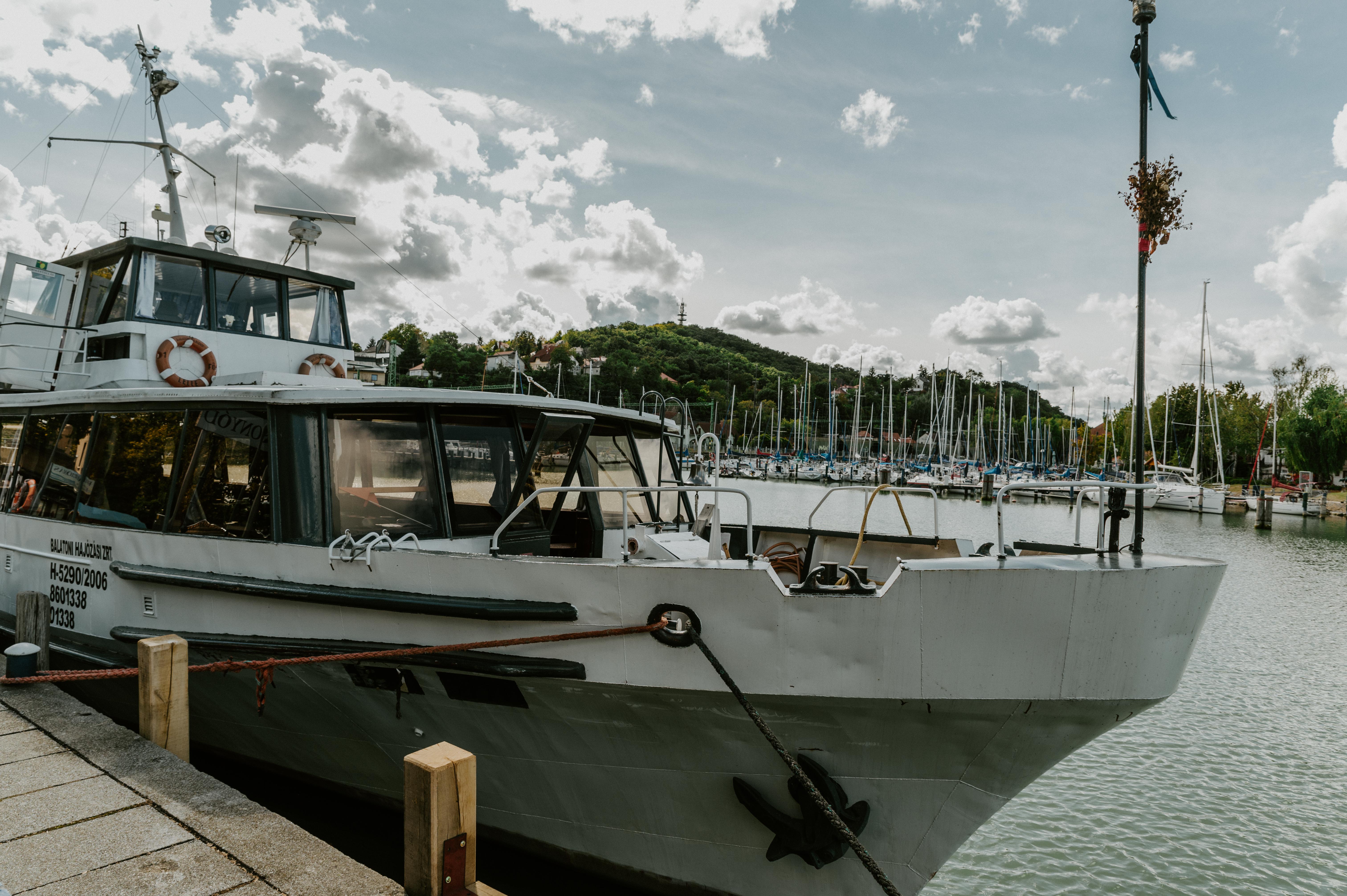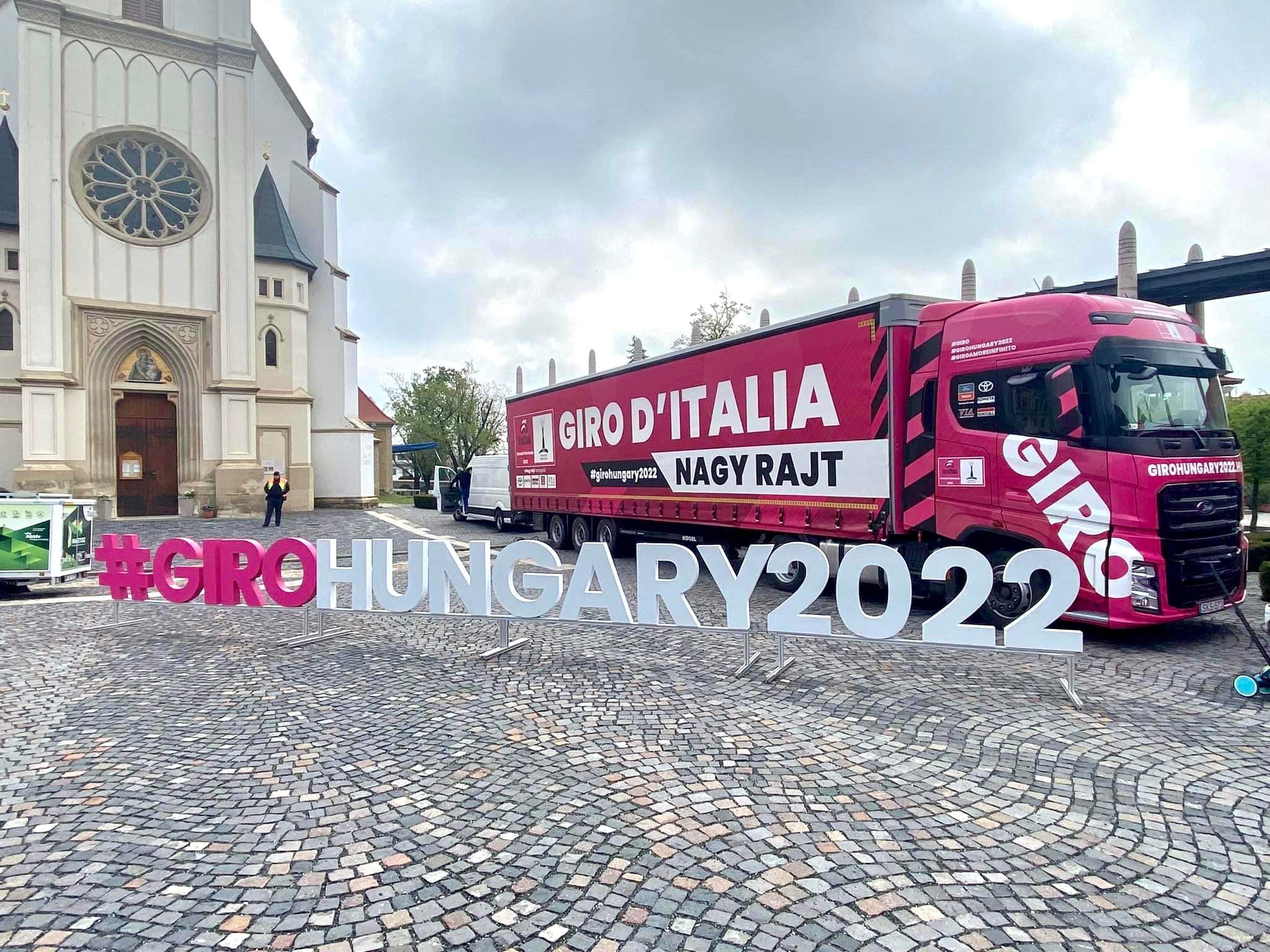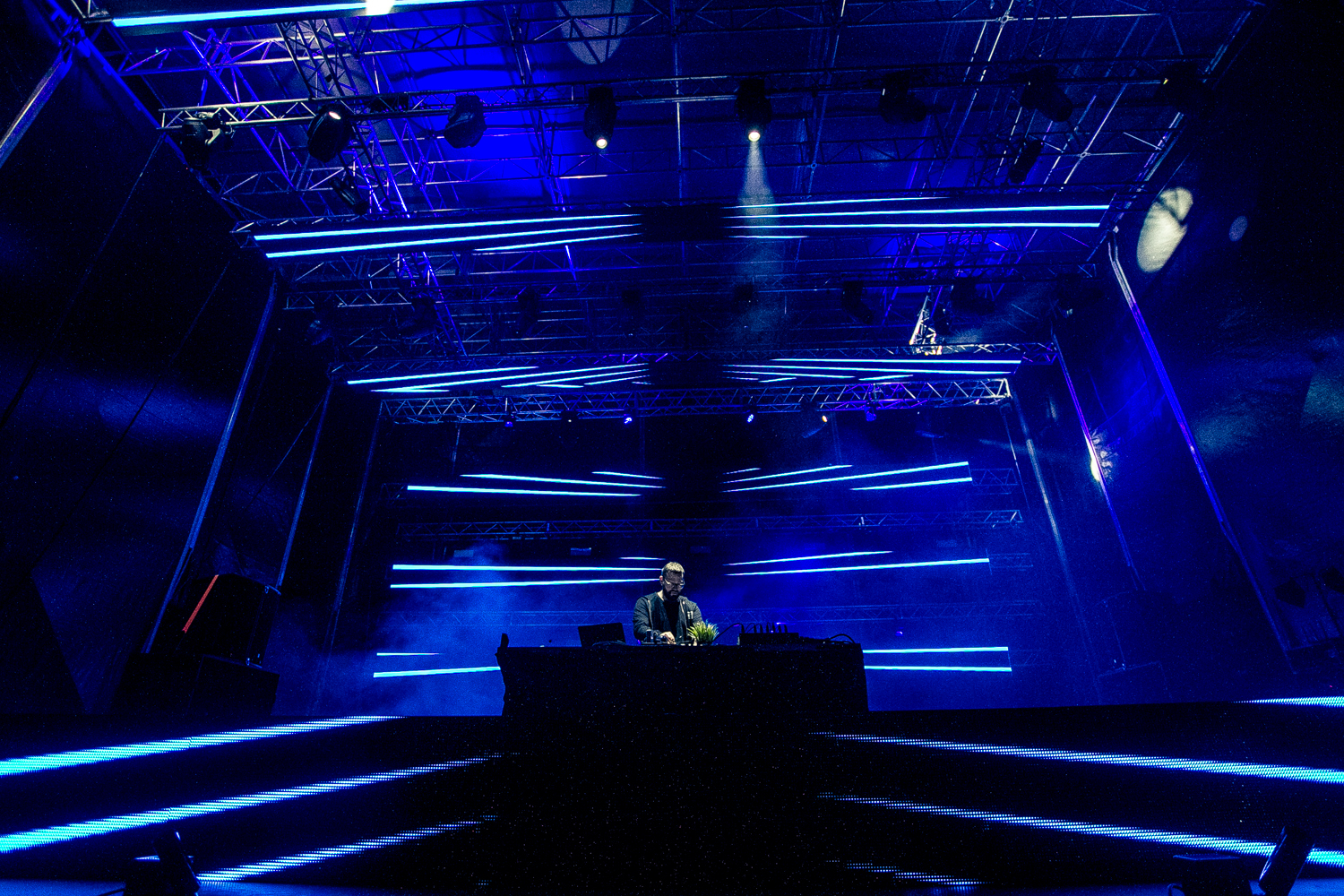Morzsa Bistro opened in the Reform Era neighborhood of town in January. To befit the name (the word “morzsa” means “breadcrumb”), the place is tiny for now, but it will double in size in the future.
We can already see signs of this in the neighboring building: before the peak season arrives, the bistro that opens from Blaha Lujza Street will be expanded with a courtyard area, and a passageway that will be an exit to the neighboring Kisfaludy Street in the form of a gastro-street. According to plans, this site will house craft stores, pubs that sell craft beer, a burger place (more on that later), and maybe even a market for the products of licensed traditional small-scale producers.

However, when we were there, Morzsa was still just a friendly bistro, resembling to a cafeteria, with a tiny open-kitchen. Despite being open since January, the trade-sign is still not hanging over the entrance, therefore we casually walked past the place at first; but if we keep an observant eye out, we can spot the hand-written sign on the glass of the front door: “We have delicious lunch. Come in if you’re hungry!” The kitchen opens around 11am or 11:30am, before that we can only order homemade fruit syrups, coffee, or juice. They already have guests around this time: we were the only ones when we sat down, but if we had arrived ten minutes later, we wouldn’t have had a table.

Despite opening in winter, the news about the Bistro travelled quickly among the locals, so during lunchtime the place is almost full. By the way, Morzsa fits into its environment – which resembles the golden age of Ráday Street in Budapest – perfectly, with quality restaurants lining up in a row (Kredenc, Hello Tourist).
The interior has the minimalist design of Scandinavian wooden houses for now: white walls and raw-wood tabletops with white legs. The only decoration on the wall was a chest made form pine planks, but according to Morzsa’s Facebook, this has changed: now the sterile emptiness is broken by a so-called container wood. It might look like there’s too much of color white here at first glance, but this clarity has a calming effect, so we believe it’s justified. It’s easier to concentrate on the flavors this way. The owner told us that they don’t plan on implementing a more complicated design than this one.

The selection will change daily, but the length of the menu will remain the same. Those who are looking for the food-truck kind of Morzsa, won't find what they're looking for: the kitchen of Kaizer consciously follows the bistro-philosophy that was pioneered by Russian immigrants in France – the name itself is derived from the Slavic word "bystro" that means “quickly”. The small restaurants opened by Russian expats lured guests in with simple meals and a quick service. The same is true here: a quick and easy-going, or, we could say, a homely service meets with simple meals made from locally sourced ingredients, served in a spectacular way.

We can choose from two kinds of soups and main courses each day. The day we visited the menu consisted of goulash soup (1,150 HUF) and cauliflower velouté (850 HUF), and teriyaki pork with fried noodle (2,180 HUF) or fried chicken with mashed potatoes and cucumber salad (1,850 HUF). The daily Morzsa-salad goes well with these meals – the chef assembles this for us based on our preferences, and in less than ten minutes. Choosing our meal wasn’t hard as it was the two of us there. The soup and the main course together cost 1,650 forints. The goulash arrived in a cup, accompanied by fresh, homemade bread. The soup was a tiny bit more salty than it should have been, but this little mistake was forgivable here. My colleague had no such problem with the cauliflower cream soup: worthy of its name, the soup was sufficiently creamy, soft and fluffy even.
There was a need for space as the teriyaki and the fried chicken arrived very quickly. Kaizer says that there’s no end to the fried noodle frenzy in Füred – those who taste it become believers. There’s a reason for it: instead of softened meat, the consistency of the pork reminds of ripe pear (all but the sweetness) due to the marinade and the steam. The chicken thigh and drumstick laid on mashed potatoes looked just like they arrived from a cartoon: they had perfect curves, they were perfectly symmetrical, and the breadcrumbs on the outside were like an exoskeleton – they held themselves, and there were no trace of oil.
We finished our meal with coffee brewed from Arcaffe and strictly made with a lever coffee machine. Unfortunately, we had to skip the Belgian beers, but we’ll arrive on foot next time so that we can enjoy them. While sipping on our java, we asked the chef about the absence of their trademark sandwiches and burgers from the menu. András Kaizer made it clear that unlike at the food truck, there’s no place for sandwiches or burgers at the bistro. However, those who crave them won’t be disappointed: Morzsa will be represented in the above mentioned gastro-street with a buffet-stop; meanwhile, the wheeled bistro will keep on rolling: the vehicle will appear at the owners’ favorite festivals (Sziget Festival, B.my.Lake).
